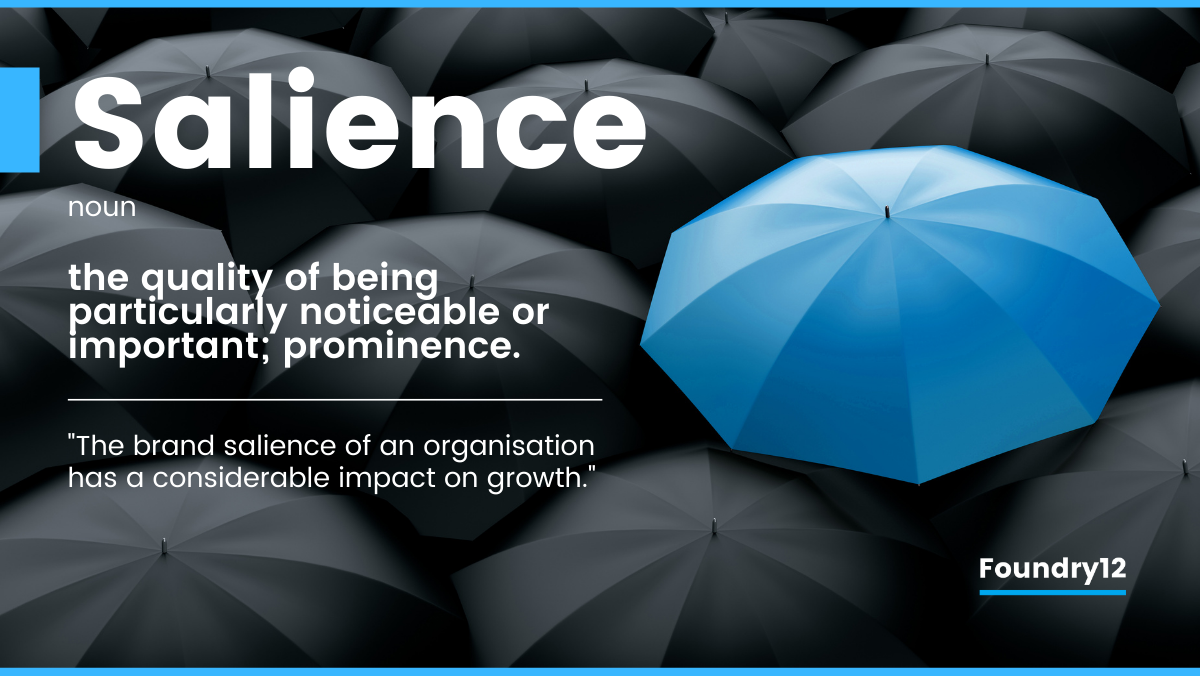Brand salience eh, what is it? Well, let’s say you’re at the supermarket doing the weekly shop with your other half. And they say to you, “the disinfectant wipes are just down that aisle, can you go and grab some?” Off you trundle, only to come face to face with a wall of disinfectant wipes. Aaargh! Disinfectant wipes, or disinfectant wipe brands, haven’t really filled your thoughts that much before. Nonetheless, there you are. And you need to make a choice. What do you do? Panic and reach out for the first one (but will it be right)? Do you pick the cheapest one? Or, wait a minute, is there one you recognise? If there is, do you go for that?
The role of brand salience
This is where brand salience assumes centre stage. Coming rushing to the aid of indecisive buyers everywhere. Salience refers to the quality of being most prominent or noticeable, allowing something to stand out from its neighbours. Your brain reacts to stimuli, and those stimuli that are most intense win your attention. Within marketing, salience is the degree to which your brand is thought about or noticed when someone is in buying mode.
We make decisions based on emotion
A much as we’d like to believe we make purchase decisions based on rational factors, we don’t. As consumers, we’re much more emotionally invested than we realise in the buying decisions we make, constantly using mental short cuts. We assign greater importance to things that have much more mental availability and are therefore easily recognised. The resulting effect of this is that we choose the ‘most salient brand’.
Byron Sharp of the Ehrenberg-Bass Institute for Marketing Science has carried out research into brand salience. He found that, together with emotive communication, it’s predominantly a function of quantity and quality when it comes to a consumers’ memory.
Quantity
In buying situations, consumers are driven by a range of mental cues that trigger brand consideration. The more memories your brand is linked to, the more salient your brand. And therefore the more likely it is to be thought of in a buying situation. Consequently, the amount of times your brand is seen by consumers plays a vital role in building and embedding memories. Ehrenberg-Bass have recently released research on what happens when brands stop advertising? Which validates the link between advertising and growth. Something we’ll return to in another post.
However, quantity alone isn’t enough.
Quality
Sharp argues the quality of brand salience is dependent on not just strength of association (through quantity), but also relevance. You may’ve seen countless ads across multiple channels for a specific product. But if the message communicated isn’t one you’re looking for at that given time, brand salience will be less. However, if the message is important and relevant because of your current needs, brand salience will increase.
We always need to remember, consumers aren’t in-market to suit brands. They’re in market when they need something. So it’s the job of a brand to stay constantly visible. And be exactly what consumers need, right when they need it.
So how do you increase brand salience?
Brands build salience by winning hearts and minds through creating as many positive memories as possible in a customer’s head. Maintaining that share-of-mind and increasing brand salience is influenced by three things:
1. Creating an emotional connection – Find the reasons why you answer the needs of your customers. Focus on these to create emotive, memorable messages your audience identify with. If you create stories with empathy that people can see themselves in, you demonstrate your value to them and how you can fulfil their needs
2. Building recognition – Remember salience refers to prominence and standing out through mental cues that trigger consideration. Be brave and create a distinctive design identity that can be applied to your marketing communications. Constant application of this consistent design identity triggers an instinctive response. Which cuts through competitor noise to set you apart and get you noticed. In competitive or mature markets it may be tough to differentiate your product or service, but you can be distinctive in how you deliver it.
3. Mental availability – Stay constantly visible and continuously reach potential buyers. The more someone is exposed to your brand, the greater the number of memories created.
Returning to the very start of this post and the person faced with a wall of products. If you build these three measures into the development of your marketing communications, your product could most likely be the one they choose.
If you’d like to talk about building greater saliency for your brand, give us a shout.
Back to our blogs.



